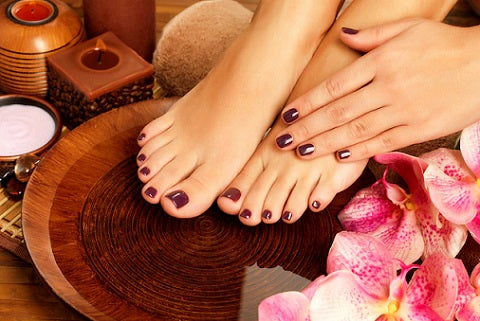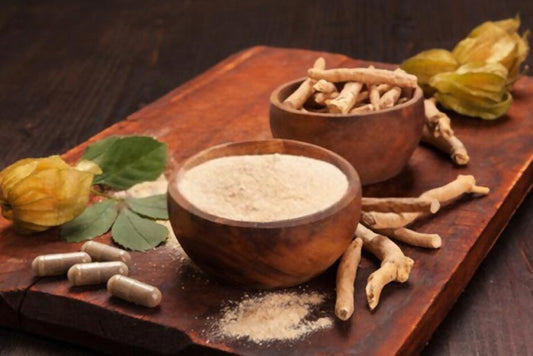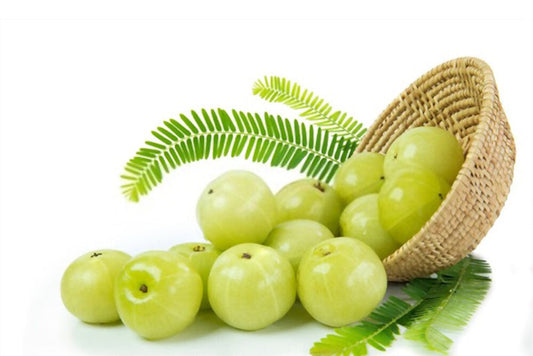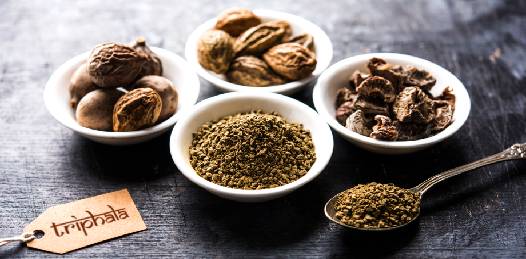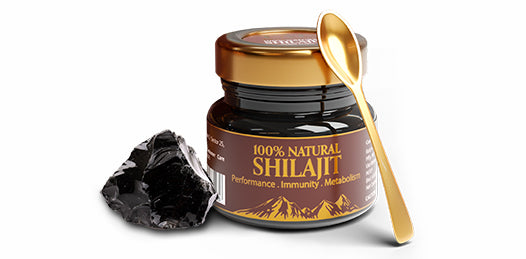No matter if you are the type of person who meticulously paints their nails every day as a form of self-care or the type of person who constantly picks and bites at their cuticles, we all have the same goal: to have nails that are strong, beautiful, and perfectly manicured. When your fingernails are neatly manicured, it gives the impression that your hands are younger and can even make you look more polished.
Frequently washing your hands and ditching visits to the salon can have a detrimental effect on the way your nails look.

Here are some signs that show that your nails are in good health.
Healthy Nails Signs:
- The color of the nail plates is a pinkish-white.
- Cuticles are real; therefore, you shouldn't cut them off!
- The nail tips and fingernails are the same length.
- A prominent white section in the shape of a half moon at the base of the nail
Unhealthy Nails Signs:
- Dryness or a vitamin deficiency is to blame for your nail's peeling or splitting.
- Tiny white spots on your nails almost always indicate that you bite them or paint them too frequently.
- Stress, high fevers, or accidentally jamming your finger could have caused horizontal grooves.
- Removing cuticles orbiting them can lead to redness and swelling around the nails.
- Nails that are shaped like spoons may be an indication of iron deficiency or anaemia.
Tips and Tricks To Keep Your Nails Healthy
Here are some of the pointers that you can follow to get healthy nails.
1. Always make sure that your hands are spotlessly clean.
After washing your hands, you should make sure that your fingernails are completely clean by first removing any and all traces of polish.
2. Don't be too rough with your fingernails.
Remember that your nails are fragile, and always treat them as such. Avoid using metal tools under your nails because doing so can lead to onycholysis, a condition that is common in people over the age of 50 and can cause the nail plate to separate from the skin and become infected.
3. Keep your nails trimmed on a regular basis.
Trimming your nails on a regular basis is just as important for their health as it is for your hair because it makes your nails more resistant to snagging and breaking. Your goal should be to trim them once every two weeks, but you can adjust this as necessary once you see how your nails react to the routine.
4. Put the health of your nails before their length.
If you have problems with hangnails or breaking your nails, you should keep your nails short — at least for a period of time while you allow them to grow stronger. Long nails are elegant, but if you have these problems, you should keep your nails short. A tidier appearance can be achieved with a shorter style that has rounded edges. This type of style also tends to be easier to maintain, which means that you won't have to put additional strain on your nails.
5. A nail file should never be out of reach.
If the nature of your work or exercise routine puts your nails in danger of becoming damaged, you should always have a nail file on hand so that you can immediately smooth down any jagged edges that may appear. Always work in one direction with the grain of your nail to achieve the smoothest finish possible.
6. Remember to maintain the cleanliness of your nail tools as well.
It is vitally important to disinfect your nail tools after each use for the same reason that it is essential to routinely clean your makeup brushes, which is a bacteria. Cleaning the metal tools you use to work on your nails with soap and water, followed by a wipe down with rubbing alcohol, is absolutely necessary if you want to avoid getting an infection. Also, don't forget to replace any disposable tools, such as emery boards, on a regular basis. There is no justification for continuing to use a tool that is in poor condition when it is so simple and only costs a few dollars to switch to a new one.
7. Do not pick at your cuticles.
The cuticle fulfills a very important function by preventing contaminants from entering the space at the base of the nail. If you do decide to cut or remove the cuticle, you should do so with caution because doing so can cause the protective barrier to be breached, leaving you more susceptible to bacteria and the risk of infection (as well as painful and unsightly tears). Taking care of your cuticles is one of the best ways to reduce the risk of developing hangnails.
If you need to push your cuticles back, the best time to do so is once a week after you take a shower (when your skin is soft), using an orange stick made of wood. To finish, apply a cuticle oil or treatment and massage it into the cuticles and nail beds.
8. Apply a base coat to your nails to protect them.
If you are going to paint your nails at home, make sure that you use a base coat first. This step prevents the nail polish from staining the nails and makes the color appear richer and more opaque after only one coat has been applied.
9. Before applying your polish, read the label first.
When purchasing nail polish, it is important to ensure that the product you are using is of high quality, and so is the situation with cosmetic and skin care products. Toxic chemicals in nail polish can cause fragility, splitting, and breaking in the nails, so they should be stopped at all costs.

10. To protect your nails from chipping, use a top coat.
Do not believe that you can get away without applying a top coat. This step is equally as significant because the top coat helps to preserve the color of the nail polish and provides your fingernails with the much-required glossy finish they require. If you want your manicure to last as long as possible without chipping, apply a new layer of top coat every three days. This will help prevent chipping.
11. Use acrylic or gel treatments on your nails only occasionally.
If you talk to a nail expert, they will try their best to dissuade you from getting acrylic or gel manicures, despite how long-lasting and convenient they are. This is due to the fact that acrylic and gel manicures are very difficult on the nail. However, if you are set on getting them, there are some things you can do to reduce the amount of damage that they will do to your hands and nails.
The primary risk associated with getting a gel manicure is being exposed to UV light from the device used to dry the gel. This light can cause damage to the skin that is located below and around the nail, which can lead to an increased risk of cancer. Applying a sunscreen with an SPF of 30 to 50 before the procedure can help block the damage that could be caused by the procedure. Alternatively, you can try using special gloves that expose only the nails themselves while protecting the rest of your hands from the UV rays that could be harmful.
12. Take a break from filing your nails.
The nail art that requires a lot of time and effort, as well as bright colors that contain a lot of pigment, should be saved for the weekend. During the rest of the week, give your nails time to relax and repair themselves with a clear gloss. If you don't give your nails a break between coats of intensely pigmented nail polish, you run the risk of your nails becoming brittle, yellowed, and even the structure of the nail becoming compromised over time.
Removers for nail polish are another possible contributor to the fragility of your nails. Going back to nature is sometimes all that's required to give your nails the reinvigoration and revitalization they so desperately need.
13. Apply lotion to your hands and nails on a regular basis.
If you apply moisturiser to your face before going to bed, you should also apply some of your nails. You can keep your cuticles and nails hydrated by applying a mixture of almond and avocado oils, and if you're in a pinch, you can even use a dab of lip balm. Formulas that are effective contain humectant components like glycerin, emollients like fatty oils, and occlusives like silicones. These three types of ingredients collaborate to hydrate the skin and nails.
14. When you are washing dishes, make sure to wear gloves.
Wearing gloves made of rubber, vinyl, nitrile, or plastic — some of which have a cotton liner — is required whenever you are gardening, cleaning with harsh chemicals, or engaging in any activity that requires you to get your hands wet or dirty. If you don't wear gloves while washing dishes in hot, soapy water, it can cause your nails to become brittle. On the other hand, getting your nails caked with dirt while gardening will require a level of cleaning that you want to avoid as much as possible.
In a similar vein, when the weather is cold, you should always remember to wear a pair of mittens or gloves. This will prevent the dry, flaky, and scaly skin that can result from exposure to cold air and wind, which can undo the hard work that you put into moisturizing your skin.
15. Consume an abundance of foods that are high in protein.
In the very same manner that you can enhance your skin's clarity or your hair's shine by changing your diet, you can enhance the condition of fingernails by altering your diet. Biotin, vitamin E, and fish oil are just some of the vitamins and supplements that you must incorporate into your day-to-day routine. On the other hand, it is imperative to consume foods that are high in protein, such as nuts, beans, and fish. When you finally figure out which products work best for your nails, you will be praised with nails that are not only more robust but also more transparent.




